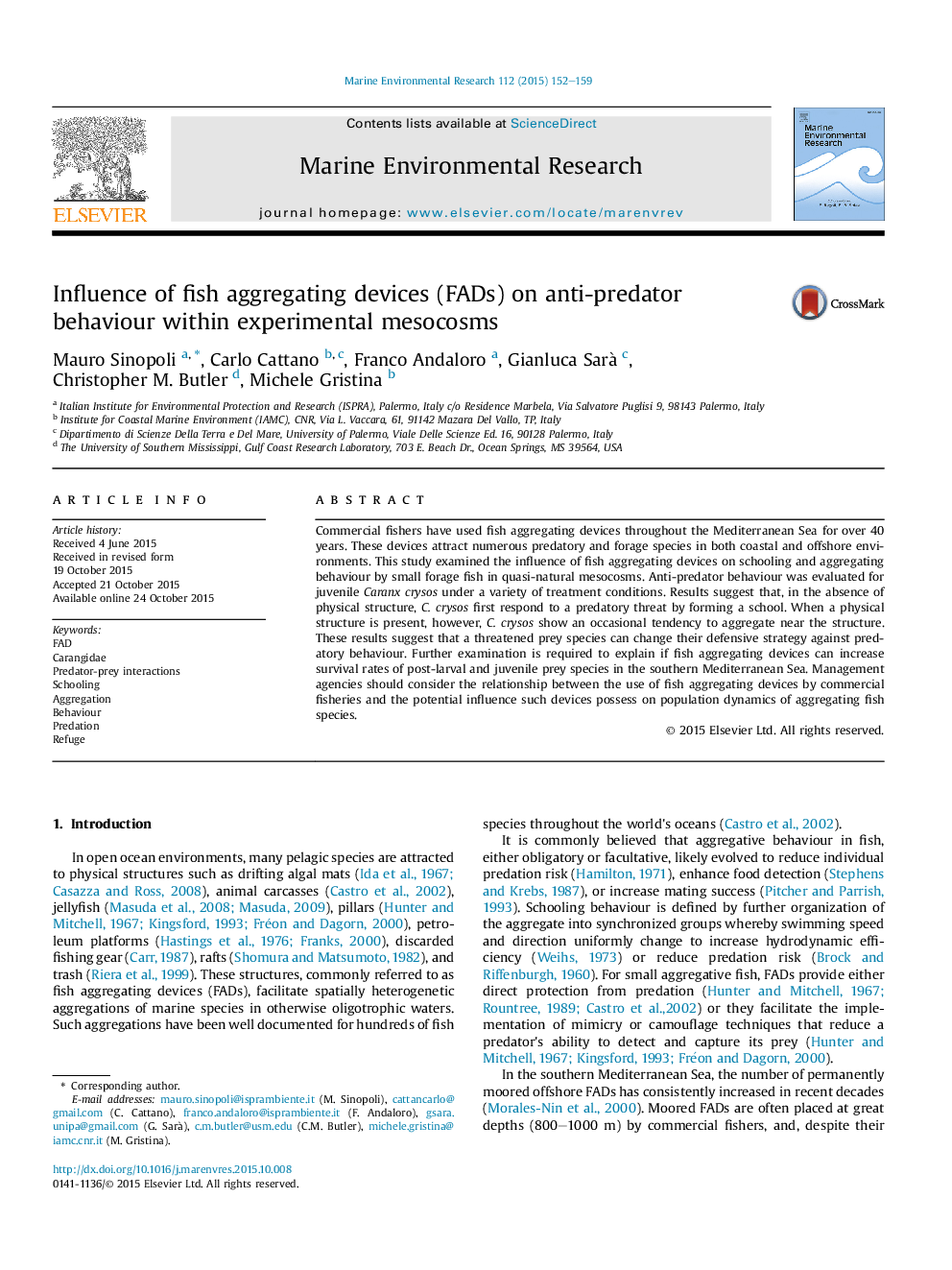| کد مقاله | کد نشریه | سال انتشار | مقاله انگلیسی | نسخه تمام متن |
|---|---|---|---|---|
| 4550649 | 1328232 | 2015 | 8 صفحه PDF | دانلود رایگان |

• Objects floating in the sea associate or aggregate fish below it (FADs effect).
• We studied anti-predator behaviour of juvenile fishes when associated with FADs.
• Threatened fish act a defensive strategy in presence of FADs.
• Future studies will assess if FADs can increase fish survival rates.
Commercial fishers have used fish aggregating devices throughout the Mediterranean Sea for over 40 years. These devices attract numerous predatory and forage species in both coastal and offshore environments. This study examined the influence of fish aggregating devices on schooling and aggregating behaviour by small forage fish in quasi-natural mesocosms. Anti-predator behaviour was evaluated for juvenile Caranx crysos under a variety of treatment conditions. Results suggest that, in the absence of physical structure, C. crysos first respond to a predatory threat by forming a school. When a physical structure is present, however, C. crysos show an occasional tendency to aggregate near the structure. These results suggest that a threatened prey species can change their defensive strategy against predatory behaviour. Further examination is required to explain if fish aggregating devices can increase survival rates of post-larval and juvenile prey species in the southern Mediterranean Sea. Management agencies should consider the relationship between the use of fish aggregating devices by commercial fisheries and the potential influence such devices possess on population dynamics of aggregating fish species.
Journal: Marine Environmental Research - Volume 112, Part A, December 2015, Pages 152–159